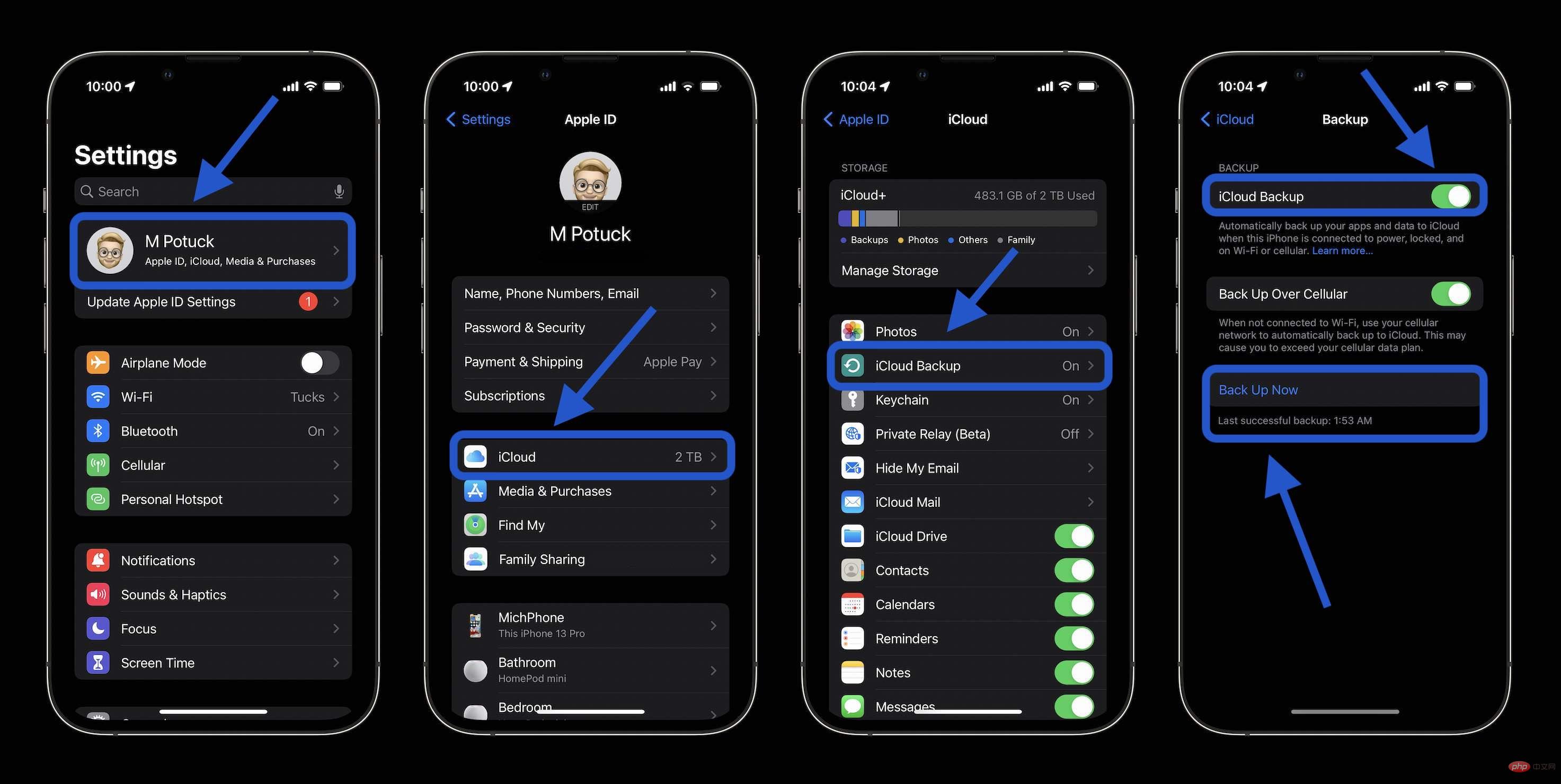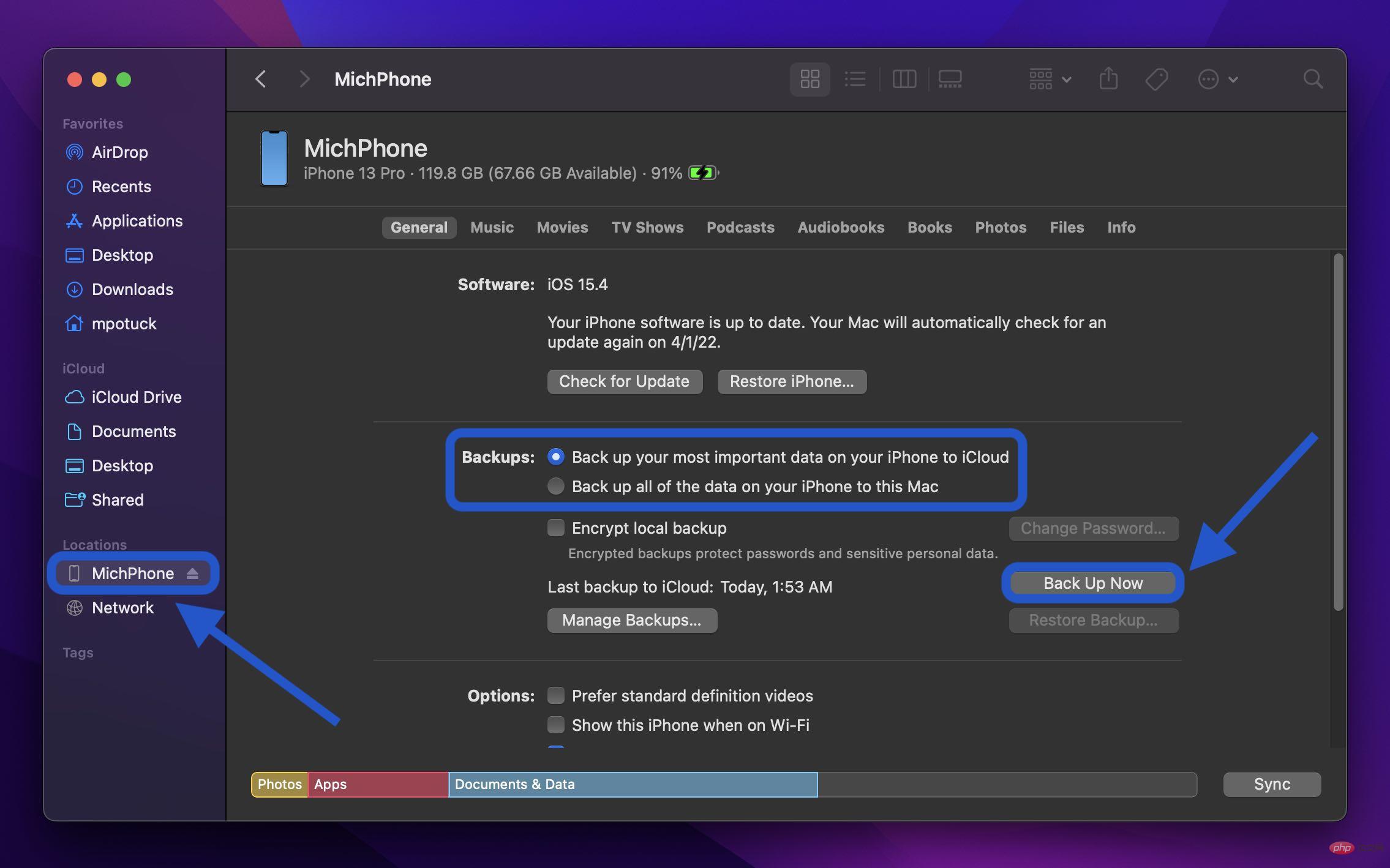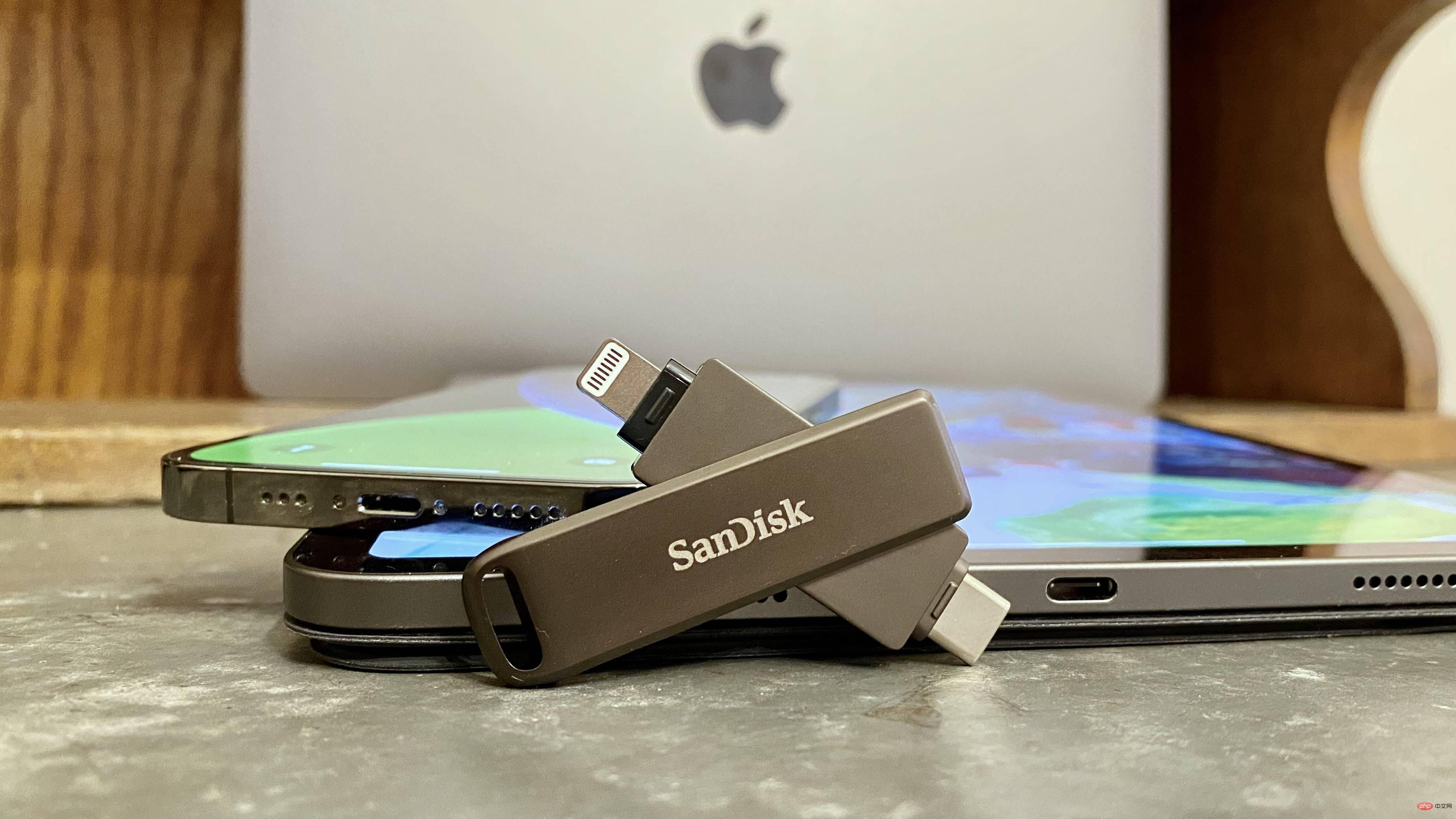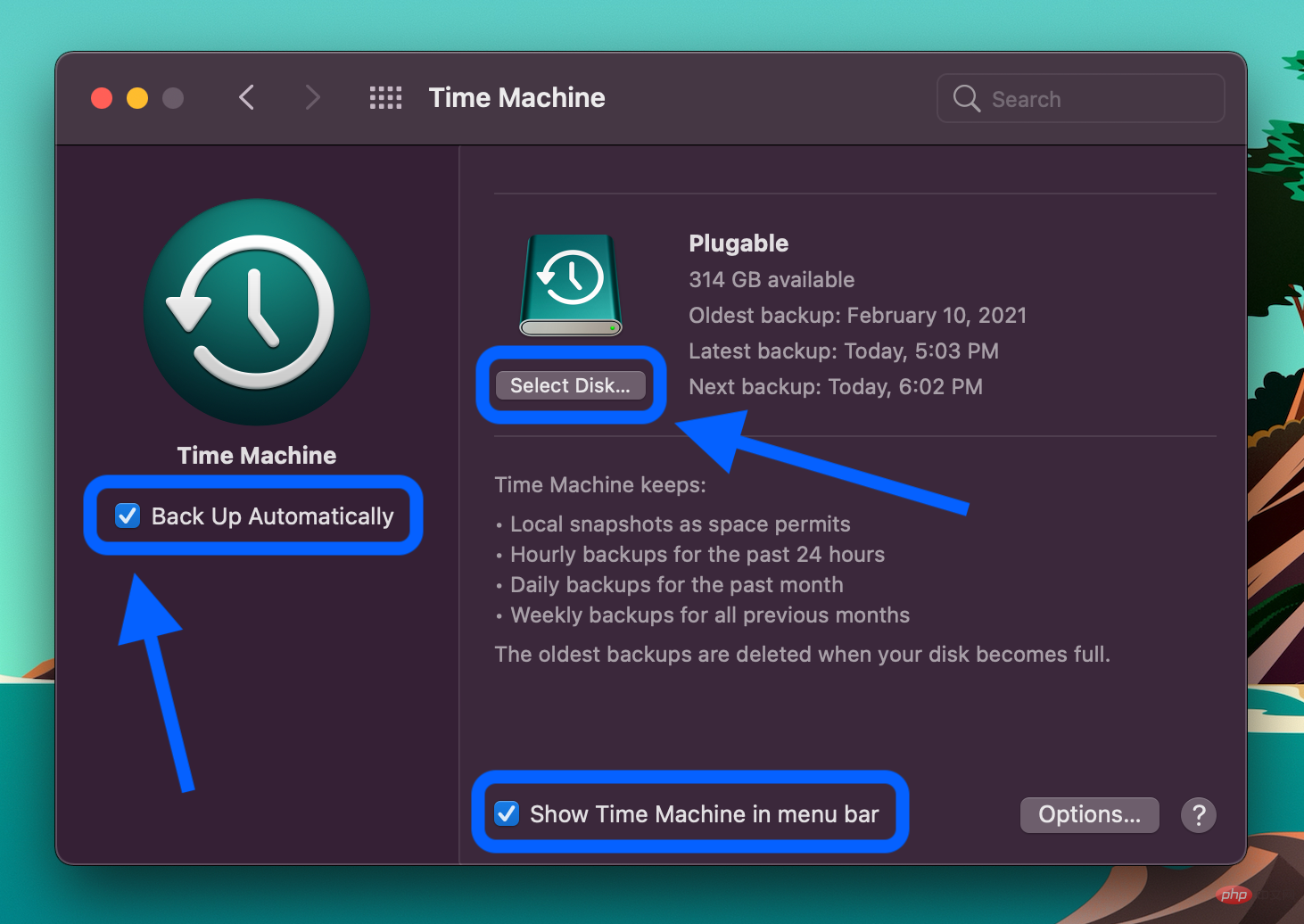Home >Common Problem >Tips and Tricks for Backing Up Data on iPhone, iPad, and Mac
Tips and Tricks for Backing Up Data on iPhone, iPad, and Mac
- WBOYWBOYWBOYWBOYWBOYWBOYWBOYWBOYWBOYWBOYWBOYWBOYWBforward
- 2023-04-13 12:40:072230browse
Tips and Tricks for Backing Up iPhone, iPad, and Mac
Backup iPhone, iPad, iPod touch
iCloud
The easiest way to back up your iOS/iPadOS device is through iCloud. If there's an issue or upgrade to your device, you can use iCloud backup to restore everything seamlessly.
Here's how to check your iCloud backup settings:
- On iPhone, iPad, and iPod touch, go to the Settings app
- Click on your name at the top and select iCloud
- Now click on iCloud Backup
- If you haven’t turned on iCloud Backup yet, Pleaseclick the toggle switch
- You can see the last successful iCloud backup under the "Backup Now" button

With iCloud Backup turned on, your iPhone, iPad or iPod touch will automatically back up while charging, connected to Wi-Fi and the screen locked. It's also a good idea to view the contents of your iCloud backup using the toggle shown above.
One thing to note is insufficient iCloud storage space. Apple offers 5 GB for free, but that's not much. Apple offers 50GB for $0.99 per month and up to 2TB for $9.99 per month. If the Apple One bundle can save you some money, it's worth checking out.
Under "Settings" > "iCloud", click "Manage Storage". Now you should see "Change Storage Plan", select it and you will see the current plan you are using and upgrade options.
Apple Watch Backup
Apple Watch backup happens automatically along with iCloud iPhone backup. When you unpair your Apple Watch from your iPhone, it's also backed up. Currently, there is no way to manually make an Apple Watch backup like you can with your iPhone. Read more about Apple Watch backup here.
Back up iOS devices using your Mac
Backing up your iPhone, iPad, or iPod with your Mac is easy, but means you need to remember to plug it in. One benefit here is that your iOS backup will also be saved along with your Mac (Time Machine, etc.) backup as well.
- Plug your device into your computer using the Lightning to USB cable.
- If prompted, select "Trust this computer."
- On macOS Catalina and later versions, open a Finder window
- On macOS Mojave and earlier versions, open iTunes (same for PC)
- Find your iPhone in the left sidebar and click on it (top left corner near the playback controls in iTunes)
- In the middle of the screen, click Back Up Now
- You can view the backup status in the sidebar
- Before unplugging your iPhone, click the eject button next to your iPhone
- You can also change the default backup in the middle of the screen Set up (shown below) to always back up all iPhone/iPad/iPod data to Mac when plugged in

Use third-party options to back up iPhone and iPad
A popular alternative to using Finder/iTunes to back up iOS devices is iMazing for Mac/PC. You get advanced controls like the ability to save and export messages, ringtone management, and more detailed backup settings. iMazing offers a free trial, with a lifetime license priced at $49.99.
External Drives for iOS Devices
Another convenient option for backing up your iPhone, iPad, and iPod touch is to use a Lightning/USB-C flash drive like the SanDisk iXpand device .

iXpand devices use an iOS app that allows them to automatically back up your photos, contacts, and more every time you plug them in. You can also use these devices to manage your data manually. If you have an iPad Air or Pro with a USB-C port, you can use them as an external storage device through the Files app.
More
Other options include apps from your mobile carrier and other third parties like Dropbox, Box, Google, and more. However, third-party apps typically don't have as complete backup capabilities as using iCloud, Mac/PC, or the other options mentioned above.
Backup Mac
Time Machine
This is one of the easiest ways to make sure your Mac is backed up. Time Machine, built into macOS and connected to the drive, creates hourly backups for the past 24 hours, daily backups for the past month, and weekly backups for the past year.
You can find 1TB external hard drives from Seagate and Western Digital for around $50. Faster SSDs typically cost upwards of $150, while Thunderbolt 3/4 drives, the fastest external storage options, are the most expensive.
If you have a problem with your Mac and need to recover data, you can use a Time Machine backup to restore everything, or enter the Time Machine app on your Mac to restore individual files.
- The first time you plug in an external drive, macOS will ask if you want to use it with Time Machine
- To manually adjust Time Machine settings, go to System Preferences > Time Machine (or click the icon in the menu bar > Open Time Machine Preferences)
- Make sure the box next to "Automatic Backup" is checked if you haven't already opened Time Machine Preferences in the menu bar Machine icon for quick and easy access
- Click "Select Disk" to add a new backup drive (more than one can be used)
- If you have more than one connected, click "Add" Or delete the backup disk..."
- Using the menu bar Time Machine tool, you can manually start the backup, view the latest backup, etc.

Time Machine Backup using NAS
Another way to use Time Machine for automatic backup is to use a Network Attached Storage (NAS) device. Some of the key advantages here include more advanced options and greater flexibility.
Third Party Automatic Mac Backup
Clone Clone
If you are looking for an alternative to using Time Machine for backup that provides more control and advanced options method, Carbon Copy Cloner is a good choice. You can create a series of backup tasks to run on a schedule automatically or manually. You can choose to back up your Mac to an external drive as well as other Macs.
Carbon Copy Cloner is a one-time purchase for $39.99 for all Macs in your home. You can also try it for free for 30 days.
Backblaze
Backblaze is probably the most popular automatic cloud backup service for Mac (and other platforms). Unlimited data plans start at $7 per device per month or $70 per year. This is an easy way to make sure your Mac is backed up offsite.
Backblaze has a proven track record and also offers a 15-day trial if you want to try it out before paying for a plan.
Manual Backup
Of course, you can always back up any important data manually by dragging and dropping to an external drive or using cloud services like iCloud Drive, Dropbox, Google Drive, etc. But this is generally not a good choice strategy for use as a primary backup because you have to remember to do this regularly and it may not contain all of your data.
The above is the detailed content of Tips and Tricks for Backing Up Data on iPhone, iPad, and Mac. For more information, please follow other related articles on the PHP Chinese website!

